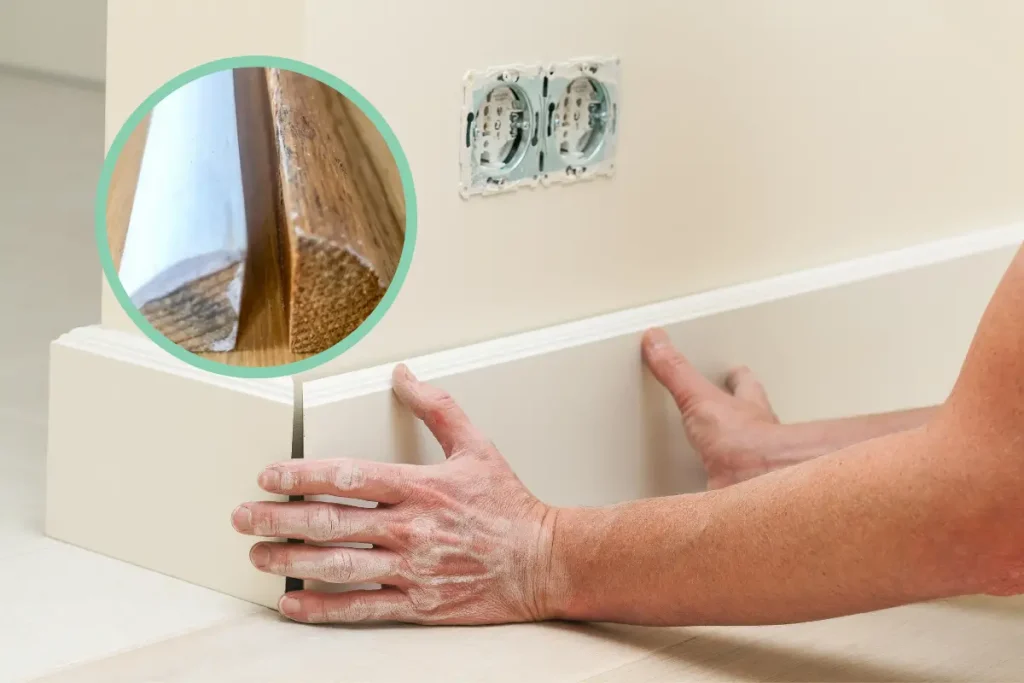It’s normal to ask whether you can install the baseboard without a quarter-round. For some contractors, the quarter round is an add-on for covering imperfections. However, some trim carpenters find that quarter-round molding gives a room a finished look.
You will need a quarter round, if the subfloor is uneven, to cover the expansion gap between the floor and baseboard. However, if you have a perfectly flat subfloor, you can install the baseboard, and it’s going to sit flat against the floor. Hence, no need for a quarter round.
I’ll detail instances where you can’t forego quarter-round molding. In addition, we’ll go through quarter-round alternatives, including whether you can use caulk instead of quarter-round. Let’s take it to the end, guys.
When Do You Need Quarter-Round Molding?
The main goal of a quarter round is to conceal the expansion gap between the floor and baseboard. It also provides an appealing transition between the floor and the wall. Although the baseboard covers most of the gap, it doesn’t conform to an uneven floor. That’s where a quarter-round comes in. It is small, flexible, and easy to install.
If you want something that can lay flat against the floor and give it a finished look, go with a quarter-round.
Do you need quarter round with Baseboards?
You don’t need a quarter-round when installing a baseboard in a room where the floor is perfectly even. Moreover, it doesn’t work well when you have a 2-inch high baseboard, and the quarter round has more wood than the baseboard.
Additionally, if you have a carpeted room where the carpet is tucked under the baseboard, there’s no need to use the quarter-round. The carpet hides any imperfections under the subfloor, eliminating the need for a quarter-round.
Alternatives to Quarter Round

Shoe Molding
Shoe molding is a great option in baseboard trim styles. It is smaller and thinner, offering a beautiful, decorative effect. Shoe molding also bends with minimal effort. It ensures a super clean transition between the baseboard and floor.
Trim carpenters agree that shoe molding is more effective at hiding imperfections. It can conceal an uneven floor. Thus, it’s a perfect alternative to the quarter round.
Cove Base Molding
Cove baseboard molding can also be used instead of a quarter-round as a transition material from the wall to the floor. It features a concave or flat shape and is less ornate than a quarter-round or shoe molding. While it mostly serves aesthetic purposes, it can also protect the wall from damage.
Square Nose Molding
This molding extends further from the wall and sits lower than a quarter round. It gives you enough room for floor extension, and it can be used to join two different types of flooring. For example, you can use it for wood-to-tile flooring by placing it against door tracks.
Bullnose Molding
Bullnose molding is an excellent alternative to quarter-round when you have a tile floor. It provides a smooth edge as it finishes more like a baseboard.
Custom Cut Molding
You can have molding cut to your taste. After all, you know what’s best for your home. Go on and order pieces in the design you like and any wood, as long as it provides a seamless floor-to-wall look.
Can You Use Caulk Instead of Quarter Round?
Caulk is required in wet areas like the bathroom or kitchen. It is then hidden with a quarter round so that it looks continuous.
On the other hand, caulk looks super clean when you have a gap that’s not large enough to use a quarter-round. This is when you have wood flooring and a slightly high baseboard. In this case, it’s not worth using a quarter-round. In addition, you can paint the caulk to make it blend in with the baseboard.
Conclusion
Installing a baseboard without a quarter round comes down to personal preference, function, and aesthetics. If you’re concerned about the expansion gap, you may want to consider quarter-round molding to cover it. The quarter round will conform to the floor and hide distasteful expansion gaps.
If your floor is flat, you don’t need a quarter-round. The baseboard is perfectly fine without it. Not to mention, the floor will look fresh when it’s not uneven.
